Key Takeaways
1. User Experience Design: The Foundation of Successful Products
"Every product that is used by someone creates a user experience: books, ketchup bottles, reclining armchairs, cardigan sweaters."
User experience is universal. It encompasses every interaction a person has with a product or service, from digital interfaces to physical objects. Good user experience design focuses on how things work on the outside, where people come into contact with them. It's about making products that are not only functional but also intuitive, efficient, and enjoyable to use.
Key elements of user experience:
- Usability: How easy and efficient the product is to use
- Accessibility: Ensuring the product can be used by people with diverse abilities
- Desirability: Creating an emotional connection with users
- Value: Delivering meaningful benefits to users and businesses
User experience design is crucial because it directly impacts user satisfaction, customer loyalty, and ultimately, the success of a product or business. By focusing on user needs and preferences, companies can create products that stand out in the market and foster long-term relationships with their customers.
2. The Five Planes of User Experience: From Strategy to Surface
"The five planes—strategy, scope, structure, skeleton, and surface—provide a conceptual framework for talking about user experience problems and the tools we use to solve them."
Hierarchical approach to UX. The five planes represent a systematic way of addressing user experience challenges, moving from abstract concepts to concrete details. Each plane builds upon the decisions made in the plane below it, ensuring a cohesive and well-thought-out user experience.
The five planes in order:
- Strategy: Defining product objectives and user needs
- Scope: Determining functional specifications and content requirements
- Structure: Organizing interaction design and information architecture
- Skeleton: Arranging interface, navigation, and information design
- Surface: Designing the sensory experience
This framework helps teams organize their thinking and ensure that all aspects of user experience are considered. By addressing each plane in turn, designers can create products that are not only visually appealing but also strategically sound and functionally robust.
3. Strategy Plane: Aligning Product Objectives with User Needs
"The most common reason for the failure of a Web site is not technology. It's not user experience either. Web sites most often fail because—before the first line of code was written, the first pixel was pushed, or the first server was installed—nobody bothered to answer two very basic questions: What do we want to get out of this product? What do our users want to get out of it?"
Strategic foundation is crucial. The strategy plane focuses on balancing product objectives (what the organization wants to achieve) with user needs (what the users want to accomplish). This alignment is fundamental to creating a successful user experience.
Key components of the strategy plane:
- Product objectives: Business goals, brand identity, success metrics
- User needs: User research, persona creation, task analysis
- Strategic alignment: Ensuring product features support both business goals and user needs
By clearly defining and aligning these elements, teams can make informed decisions throughout the design process, ensuring that the final product serves both the organization and its users effectively.
4. Scope Plane: Defining Functional Specifications and Content Requirements
"To gain market share against these first-movers, competitors often add more and more content and functionality in hopes of drawing in new customers (and maybe stealing a few customers from the competition). This race to cram more features into products is hardly unique to the Web; from wristwatches to mobile phones, featuritis is endemic to many product categories."
Avoid feature creep. The scope plane involves defining what features and content will be included in the product. It's crucial to strike a balance between providing value and avoiding overwhelming users with unnecessary complexity.
Key aspects of the scope plane:
- Functional specifications: Detailed descriptions of product features
- Content requirements: Defining the types and attributes of content needed
- Prioritization: Determining which features are essential and which can be deferred
- Scope control: Avoiding "feature creep" that can dilute the product's focus
By carefully defining and managing scope, teams can create focused products that meet user needs without becoming bloated or confusing. This process helps ensure that resources are allocated to the most impactful features and content.
5. Structure Plane: Crafting Interaction Design and Information Architecture
"Interaction design and information architecture share an emphasis on defining patterns and sequences in which options will be presented to users."
Organizing user flows and information. The structure plane focuses on how users interact with the product and how information is organized. It bridges the gap between abstract strategy and concrete design.
Key elements of the structure plane:
- Interaction design: Defining how the system responds to user actions
- Information architecture: Organizing and structuring content
- Conceptual models: Creating understandable representations of system functionality
- User flows: Mapping out the paths users take to accomplish their goals
Effective structure design ensures that users can navigate the product intuitively and find the information or functionality they need efficiently. This plane sets the foundation for the more detailed design decisions that follow in the skeleton and surface planes.
6. Skeleton Plane: Developing Interface, Navigation, and Information Design
"Interface design is all about selecting the right interface elements for the task the user is trying to accomplish and arranging them on the screen in a way that will be readily understood and easily used."
Optimizing user interactions. The skeleton plane deals with the arrangement of interface elements to maximize efficiency and understanding. It focuses on the details of how users will interact with the product on a screen-by-screen or component-by-component basis.
Key aspects of the skeleton plane:
- Interface design: Selecting and arranging interface elements
- Navigation design: Creating systems for moving through the product
- Information design: Presenting information for effective communication
- Wireframing: Creating schematic layouts of key screens or pages
The skeleton plane is where the user experience becomes tangible. By carefully considering the placement and behavior of each interface element, designers can create intuitive and efficient user experiences that guide users toward their goals.
7. Surface Plane: Creating Sensory Design for Visual Appeal
"Color can be one of the most effective ways to communicate a brand identity. Some brands are so closely associated with colors that it's difficult to think of the company without the color automatically coming to mind—consider Coca-Cola, UPS, or Kodak."
Visual design impacts perception. The surface plane is where the product takes on its final, visual form. It deals with the sensory experience of using the product, focusing primarily on visual design elements.
Key elements of the surface plane:
- Color palettes: Choosing colors that reinforce brand identity and enhance usability
- Typography: Selecting appropriate fonts for readability and brand consistency
- Layout: Applying grid systems and visual hierarchy to organize content
- Imagery: Using icons, illustrations, and photos to enhance communication
- Animation and transitions: Adding motion to guide users and provide feedback
The surface plane is where many users will form their first impressions of a product. By creating a visually appealing and cohesive design that aligns with the decisions made in the lower planes, designers can create products that are both beautiful and functional.
8. Balancing Consistency and Innovation in User Experience Design
"Convention allows us to apply those reflexes in different circumstances."
Leverage familiarity, introduce novelty. Successful user experience design often involves finding the right balance between using familiar patterns that users understand and introducing innovative elements that improve the experience or differentiate the product.
Strategies for balancing consistency and innovation:
- Adhere to established design patterns for core functionality
- Introduce novel interactions for unique or differentiating features
- Ensure innovations provide clear benefits to users
- Test new ideas thoroughly to validate their effectiveness
By thoughtfully combining familiar elements with innovative features, designers can create products that are easy to use yet still exciting and engaging. This approach helps users feel comfortable while still providing them with new and improved ways to accomplish their goals.
Last updated:
FAQ
What's "The Elements of User Experience" about?
- User-Centered Design Focus: The book by Jesse James Garrett is about creating user-centered designs for the web and beyond, emphasizing the importance of considering the user's experience in every aspect of product development.
- Five-Plane Model: It introduces a five-plane model—strategy, scope, structure, skeleton, and surface—that provides a framework for understanding and improving user experience.
- Beyond Aesthetics: The book stresses that user experience is not just about aesthetics but also about how a product works and meets user needs.
- Practical Guidance: It offers practical guidance on how to apply these concepts to create cohesive and effective user experiences.
Why should I read "The Elements of User Experience"?
- Comprehensive Framework: It provides a comprehensive framework for understanding the different elements that contribute to user experience, making it a valuable resource for designers and developers.
- Improves Product Success: By focusing on user experience, the book helps readers create products that are more likely to succeed in the market by meeting user needs effectively.
- Applicable to Various Products: Although it focuses on web design, the principles can be applied to a wide range of products and services, making it versatile.
- Enhances Communication: It helps improve communication within teams by providing a common vocabulary and understanding of user experience concepts.
What are the key takeaways of "The Elements of User Experience"?
- User Experience Matters: A good user experience is crucial for the success of any product, as it directly impacts user satisfaction and business outcomes.
- Five-Plane Model: Understanding and applying the five-plane model can help in systematically addressing user experience issues.
- Strategic Alignment: Aligning product objectives with user needs is essential for creating a successful user experience.
- Iterative Process: User experience design is an iterative process that requires continuous evaluation and refinement.
What is the five-plane model in "The Elements of User Experience"?
- Strategy Plane: Focuses on aligning product objectives with user needs, forming the foundation for all design decisions.
- Scope Plane: Involves defining the functional specifications and content requirements that will meet the strategic objectives.
- Structure Plane: Deals with organizing the information and designing interactions to create a coherent user experience.
- Skeleton Plane: Focuses on interface, navigation, and information design to give shape to the structure.
- Surface Plane: Concerns the sensory design, including visual and other sensory elements, to create an appealing and functional product.
How does Jesse James Garrett define user experience in the book?
- Beyond Functionality: User experience is about how a product works on the outside, where users interact with it, not just its functionality.
- User-Centered Approach: It involves considering the user's needs, expectations, and behaviors at every step of the design process.
- Holistic View: User experience encompasses all aspects of a user's interaction with a product, including usability, design, and emotional impact.
- Strategic Importance: A good user experience is a strategic advantage that can differentiate a product in the market.
What are some practical applications of the five-plane model?
- Web Design: The model is particularly useful for web design, helping to create sites that are both functional and user-friendly.
- Product Development: It can be applied to any product development process to ensure that user needs are considered at every stage.
- Team Communication: The model provides a common language for teams to discuss and address user experience issues.
- Iterative Improvement: It supports an iterative approach to design, allowing for continuous refinement based on user feedback.
What are the best quotes from "The Elements of User Experience" and what do they mean?
- "Good user experience is good business." This emphasizes the idea that focusing on user experience can lead to better business outcomes by increasing user satisfaction and loyalty.
- "User experience is about how it works on the outside, where a person comes into contact with it." This highlights the importance of considering the user's perspective in design.
- "The practice of creating engaging, efficient user experiences is called user-centered design." This defines the core approach advocated in the book, focusing on the user's needs and behaviors.
- "A successful user experience is one in which the user’s expectations are anticipated and accounted for." This underscores the importance of understanding and meeting user expectations in design.
How does "The Elements of User Experience" address the role of content in user experience?
- Content as Key Element: Content is a crucial part of the user experience, as it provides the information users seek and interacts with.
- Content Requirements: The book discusses how to define content requirements that align with user needs and strategic objectives.
- Content Management: It highlights the importance of content management systems in maintaining and delivering content effectively.
- Content and Functionality: The relationship between content and functionality is explored, showing how they work together to create a cohesive user experience.
What is the importance of strategy in user experience design according to Jesse James Garrett?
- Foundation for Design: Strategy forms the foundation for all design decisions, ensuring that they align with both user needs and business objectives.
- Clear Objectives: Defining clear product objectives and user needs helps guide the design process and avoid scope creep.
- Success Metrics: Establishing success metrics allows for the evaluation of whether the user experience meets strategic goals.
- Evolving Strategy: The book emphasizes that strategy should evolve and be refined throughout the design process to remain relevant.
How does "The Elements of User Experience" suggest handling user research?
- Understanding Users: User research is essential for understanding who the users are and what they need from the product.
- Segmentation: The book suggests segmenting users into groups with common characteristics to better address their needs.
- Research Methods: Various research methods, such as surveys, interviews, and user testing, are discussed to gather insights.
- Personas: Creating personas based on research helps keep the user's perspective in mind throughout the design process.
What role does visual design play in user experience according to the book?
- Sensory Appeal: Visual design is part of the sensory experience, making the product appealing and engaging to users.
- Brand Communication: It plays a key role in communicating brand identity and supporting strategic objectives.
- Guiding Attention: Visual design helps guide the user's attention to important elements and supports navigation and information design.
- Consistency: Maintaining visual consistency across the product enhances usability and reinforces the brand.
How can "The Elements of User Experience" help improve team communication?
- Common Vocabulary: The book provides a common vocabulary for discussing user experience issues, improving team communication.
- Shared Framework: The five-plane model offers a shared framework for understanding and addressing user experience challenges.
- Cross-Disciplinary Collaboration: It encourages collaboration between different disciplines, such as design, development, and content creation.
- Documentation: Emphasizes the importance of documentation, such as wireframes and style guides, to ensure everyone is on the same page.
Review Summary
The Elements of User Experience is widely regarded as an essential read for UX designers, offering a comprehensive framework for understanding and structuring user-centered design. Readers appreciate Garrett's clear explanations and the book's timeless principles, particularly the five planes model. While some find it dry or lacking in practical examples, many praise its ability to provide a holistic view of UX design. The book is considered foundational for beginners and a valuable reference for experienced professionals, though some feel it may be becoming outdated in certain aspects.
Similar Books
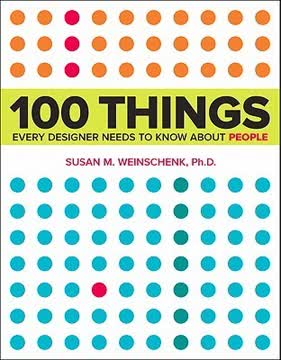
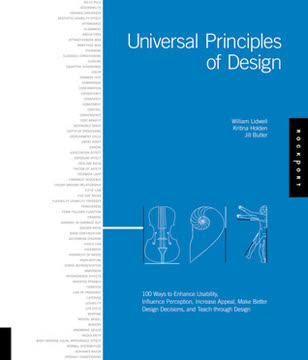


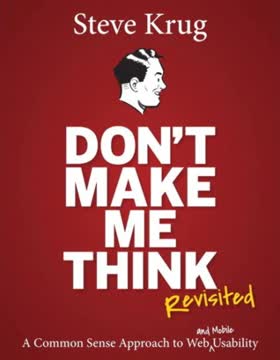

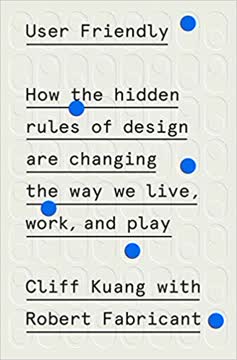

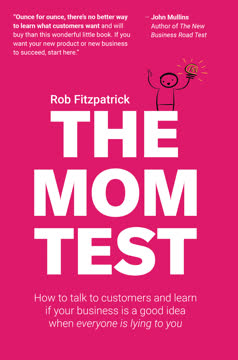

Download PDF
Download EPUB
.epub digital book format is ideal for reading ebooks on phones, tablets, and e-readers.




